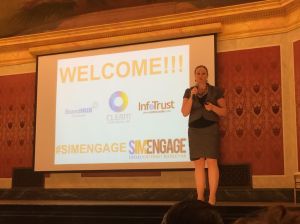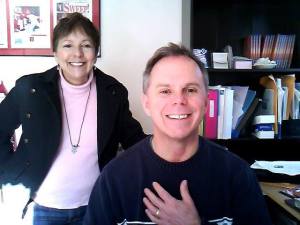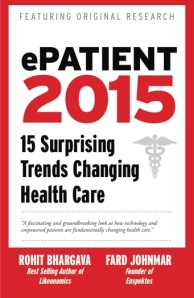Don’t underestimate the importance of Research in your brand journalism strategy

If you researched Cincinnati, you would learn about landmarks such as Fountain Square, the Carew Tower and Roebling Suspension Bridge. Research is the first step in the strategic planning process, as important in developing an effective communication plan as it is in deciding what to see on a trip to a new destination.
Imagine going on a trip to a new city. You might Google the city’s name, look on Wikipedia, browse through travel guides, talk to friends who had been there before… You might find out about the cool restaurants, landmarks and aspects that align with your interests. You might do some homework, some research before planning what you could want to do.
Or, let’s say you were the coach of a football team getting ready for your next game. You would probably watch video of your opponent from the matchup a year earlier and in games this season leading up to the contest. You would confer with scouts who had seen the competition. You would view media coverage. Etc. You would do your homework, your research, while developing a game plan.
It’s no different with planning a strategic brand journalism program!
If you are Accredited in Public Relations (APR), you know well that Research is the first step in the strategic process: Research, Planning, Implementation and Evaluation. And that there is Primary and Secondary Research.
Primary Research involves one-on-one interviews, surveys, focus groups and the like.
Secondary Research includes a review of articles and video about a topic, studying what others have done to solve the problem under consideration, conferring with professions in your networks, etc.
Both are very important, as you move on to the Planning phase.
Example — I feel extremely fortunate to have been involved in a foster parent recruitment campaign that was deeply researched. My role involved researching portions of the campaign that would help build buy-in from internal audiences. You would think that social workers would be very enthusiastic about a $1 million campaign designed to attract 200 badly needed foster parents. My research showed the opposite. Many of the workers expressed cynicism about the planned campaign. They didn’t support the strategy. They feared it would bring in “wide-eyed suburban do-gooders” not suited for the demanding (yet rewarding) role of foster parenting. They were bad-mouthing it!
So, we came up with a multi-faceted campaign that included a brief weekly e-mail with four key points for frontline managers to share with their teams. We asked frontline managers to address concerns and share them with us. We identified who the go-to team leaders and caseworkers were — those that most social workers trusted and admired, not necessarily those with high ranking on the org chart. We took the time to educate them and listened to their concerns, so they could serve as positive ambassadors for the campaign. We held an event, with food and a “sneak preview” of the TV commercials and print ads. When caseworkers complained that they wanted Whitney Houston music instead of Sarah McLachlan, we did focus groups with the target audience — which loved the music — and shared the findings with the social workers. We did surveys to see if social workers grasped key messages and were supportive. As the campaign generated results, we took environmental portraits of new foster parents for spotlighting in our newsletter, on our intranet and in a gallery in the cafeteria.
This was a campaign where we had the time and money to do it right. It went to the top of our priority list, and leadership supported us in putting secondary priorities on temporary hold. It won some awards… and, most importantly, met the goal of attracting 200 foster parents.
But, my point is, it all started with Research. Just like when you’re researching a trip to a cool place like Cincinnati!
Tips for those moving from journalism to public relations

If you build upon skills developed in a journalism career, a future in PR could blossom. (Photo of shrub in my yard.)
From time to time, journalists ask me for thoughts on moving into public relations. Somebody tells them about my shift to PR a couple of decades ago after a dozen years as a newspaper reporter and editor. So I get the opportunity to share what worked for me — and hopefully will help them. Here are a few of the things I did. (By the way, I don’t regret the career change at all.)
(1) Strategic outreach to my network (although I didn’t know it at the time). I sent letters and resumes to contacts at companies I admired and knew were doing well, and followed up with phone calls. I had the great fortune of doing in-depth research as part of my job as a business reporter, so I knew who they were. I didn’t hear back from many of them, got rejection letters from others… Then, one called and said he was working to create a position in the corporate communications office he led at a computer software firm. That landed my first job in PR. I put my background as a reporter to use pitching stories about our software to trade journals and writing customer success pieces.
(2) Join the Public Relations Society of America and start attending its monthly meetings. My first manager encouraged me to join. He said it would be a good place for me to keep up with the pulse of the local PR scene, which would help us identify good candidates if our office expanded and keep us up to date with the latest in PR and communications. He also joked (sort-of) that a single guy like me might find a wife in an organization with so many women. I did end up meeting my wife at an Internal Association of Business Communicators (IABC) meeting!
(3) Connect with people at PRSA meetings. As a business reporter, I had learned a few things about networking at events. One tip was to set a goal of exchanging several business cards at an event. Take time to ask each person where they work and what they do. Ask where they went to school, etc. Be sure to have a concise description of your role and/or career objective rehearsed and ready, and bridge to it when appropriate. When you leave, jot a note or two about each person on the business card that will help with followup. Be sure to connect on LinkedIn, if you haven’t already.
(4) Reach out to your contacts when the seemingly inevitable happens. I had only been in PRSA for about a year when my first PR job was eliminated as part of a company-wide downsizing. I e-mailed and/or called people in PRSA I barely knew, and several of them gave me good leads. They steered me away from dysfunctional situations and pointed me to possibilities I didn’t know existed. For example, I had seen an ad that stressed desktop publishing ability, which I didn’t have. But a contact who had a freelance job with the government social services agency suggested that I call anyway. Within two hours, I had an interview! Within two weeks, I had a job — one that would keep me gainfully employed for the next 17 years! My manager viewed the ability to write interesting and informative articles in AP style and on deadline was much more valuable than desktop publishing, a skill that could be learned in a relatively short time.
(5) Get your APR (Accredited in Public Relations) from PRSA. This was a game-changer for me. It taught me about areas of PR beyond media relations and newsletter/fact sheet writing. It showed me how to develop strategic communications programs. Now, it’s part of my DNA — Research, Planning, Implementation and Evaluation. I’ve had the great fortune of developing and carrying out plans with worthy goals such as getting employee buy-in for an important foster parent recruitment campaign, making an intranet an essential part of employees’ workdays, and building awareness for a a previously low-key healthcare system.
(6) Get involved in PRSA volunteer opportunities. Another major step came when I joined the leadership team of the Cincinnati PRSA chapter. I gained invaluable experience about event planning while serving as programming chair and, more importantly, about leadership during my year as chapter president. I made amazing contacts, many of whom I now consider good friends. I learned how to work collaboratively with diverse groups of talented individuals. Five times, I served as a National Assembly delegate, which allowed me to connect with PR go-getters from across the country.
(7) Never stop learning. As time goes on, I find myself endlessly reading PR, marketing and digital strategy books and blog posts. I attend not just PRSA meetings, but offerings of groups such as the American Marketing Association, Cincinnati Social Media, the Social Media Health Network… This is a vast field, with lines between PR, marketing, communications and advertising blurring as never before. Technological advances come faster and faster.
(8) Follow the leaders on social media. Twitter opens the door to a treasure trove of valuable information — white papers, infographics, podcasts, videos, webinars… Hashtags take you to conferences around the globe focused on PR, marketing, digital, healthcare communication, innovation, inspiration… you name it. You get access to well-known authors and speakers as never before. LinkedIn is awesome. Facebook and Google+ and YouTube, oh my!
(9) Don’t take yourself too damn seriously. This is just a note to me. I can get super serious and stressed out about this stuff. Lighten up and have fun. The journey into PR is a marathon, not a sprint. Enjoy the process!
Super interesting book — ePATIENT 2015: 15 Surprising Trends Changing Health Care
Want an optimistic look at the future of healthcare? Big believer in the power of technology to better lives? Then I highly suggest you check out this book.
Authors Rohit Bhargava, who advises global healthcare brands on communication strategy, and Fard Johnmar, a digital health futurist and researcher, combine extensive research with insights from pioneers of the digital health movement in the easy-to-read, well-organized book ePATIENT 2015: 15 Surprising Trends Changing Health Care (2014, 219 pages).
Findings are broken into three themes:
(1) Health Hyperefficiency– How Technology and Computing are Making Health Care More Efficient, Safe and Effective;
(2) The Personalized Health Movement – How Technology is Helping Health Become More Individualized and Relevant to People’s Needs; and
(3) Digital Peer-to-Peer Health Care – How Digital Tools are Enabling Enhanced Collaboration and Peer Support.
For each of the themes, there are three to nine of the 15 trends. For each trend, the authors give a brief overview, share stories that give real-life examples of the trend, and report results of recent surveys of ePatients.
As the husband of a cancer thriver, I found two trends particularly appealing:
“Trend 13 – Virtual Counseling. People are using online tools to seek and forge one-on-one relationships and offer virtual logistical and emotional support. This can include helping others to navigate the new health-insurance landscape, “sponsoring, ” or counseling one another and providing unique knowledge about conditions, ailments, and caregiving. – Page 165
“Trend 14 – CareHacking. As patient health data becomes more widely available and the number of caregivers managing medical care for family members increases, digitally savvy health consumers will leverage the information they gain from doctors, the Web, and other sources to better ‘hack’ the health system to educate themselves, navigate loopholes, find more efficiencies, and ultimately get better, lower-cost and faster care for themselves and those they love.” –Page 171
In the introduction, the authors offer scenarios of how patients handle common health situations now – and how they will in the near future, when technology advances. The first involves the mother of a 3-year-old who has a fever; the second, a man who learns he has lung cancer. I won’t spoil the stories. They’re facinating.
The up-front stories are worth a read, even if you don’t want to go further… but, trust me, you will.
Disclaimer: I received a free preview copy of the book.







